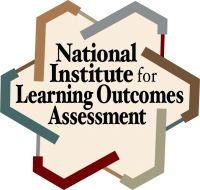Description
The assignment is a Food Safety Manual that students create to demonstrate their knowledge and understanding of concepts taught throughout their course, drawing on current research to ensure their manual is up to date and relevant to their chosen audience. Students can create a manual for food service employees at any type of food service operation or they can choose to create a food safety manual designed for use in their own home.
Background and Context
The assignment is used in core course HOSP101, Food Service Sanitation. The is course is part of the Bachelor’s in Hospitality Management and the Associate’s in Restaurant Operations. This class is presented in a completely asynchronous online format, running 8 weeks. It is the final project in the course, due at the end of week 8.
Students taking this core course may not all be focused on Restaurant Management; however, they come to appreciate the fact that food safety is essential not only in all segments of the hospitality industry, but in their own personal lives as well. Students who do not plan to work in a restaurant have the option to create a food safety manual for applied use in their own home.
Utilization of industry resources and additional research is required for this course, so some students may face challenges when working on their research. This is a 100 level course, so their research skills may not be honed as well as they will be at the the end of their program; however, this is a culminating assignment utilizing resources and information that were previously covered during the course. The student has access to the assignment details and instructions at the beginning of week 6, so they have three weeks to complete the assignment, ask questions, or seek clarification on instructions.
Since some students are not food service majors and may not have had previous industry experience, it may be difficult for them to apply the knowledge they have gained to a working manual. However, the option to create a manual for home use enables them to apply their knowledge and theory to a real world situation, giving them an opportunity for practical application.
Alignment and Scaffolding
This assignment is the final project in the course, and is designed so that the students can showcase what they have learned during the class and how the theories and concepts apply to the real world, both in the restaurant or hospitality industry or in their own personal lives. Students will use the knowledge gained in this course throughout their lives regardless of whether or not they choose to work in the food service industry. However, those students who are studying the food service industry need to be able to apply this basic knowledge of food safety for future courses that will address restaurant operations, since food safety is a basic tenet that must be followed in all hospitality operations.
The assignment is a comprehensive, industry-worthy manual intended for use in the food service industry or for private use in the home. Food safety is an important element for students that are earning a bachelor’s degree in Hospitality with a concentration in Food Service, but is also relevant for students entering the Lodging, Tourism, or Meeting & Event Planning fields.
Food safety knowledge is essential to every person that cooks or consumes food; it is not applicable only to the food service industry. Since students who will not be going into the food service industry have the ability to create a manual for home use, this assignment would be applicable in many other courses including education, nutrition, homeland security, or entrepreneurial courses.
Creating a tool that can be used is a good way for students to realize how the theory that they are learning will be applied in their careers or personal lives.
Students take the knowledge gained from creating a working food safety manual and are able to apply those techniques and skills to future operational courses as well as put what they have learned into practice immediately in their own lives.
Reflections
This assignment is typically one that receives a lot of positive feedback. Students are able to see how the concepts and theories they have learned about have practical applications in the real world. Students typically appreciate this assignment, giving them the ability to apply their knowledge gained by creating a practical assessment that they can actually use either in their home or in their place of employment.
One difficulty that students have is creating a manual that includes the required element but also provides context and explanation to the target audience. Students tend to focus on including the information, but do not customize it to their own facility or include explanations – they list the information because it is required but do not think about why it is important. Since this is an 8 week class, time is always an issue. Even though students receive the details about the assignment in week 6, the suspicion is that they don’t begin it until the week it is due, which leaves them scrambling just to put the necessary information in, without adding in the critical thought and context.
The assignment has been revised to include more specific instructions about how to include context and explanation. Throughout the course, tips are posted in the classroom to feature examples of particular sections within the manual, and how to develop then. These additional hints seem to help.
Please select an option
The assignment library and the assignments within are licensed under a Creative Commons Attribution 4.0 International License. By clicking “Ok” you agree to cite each assignment (including modifications), with the provided citation on the assignments downloaded from this site.
OK

